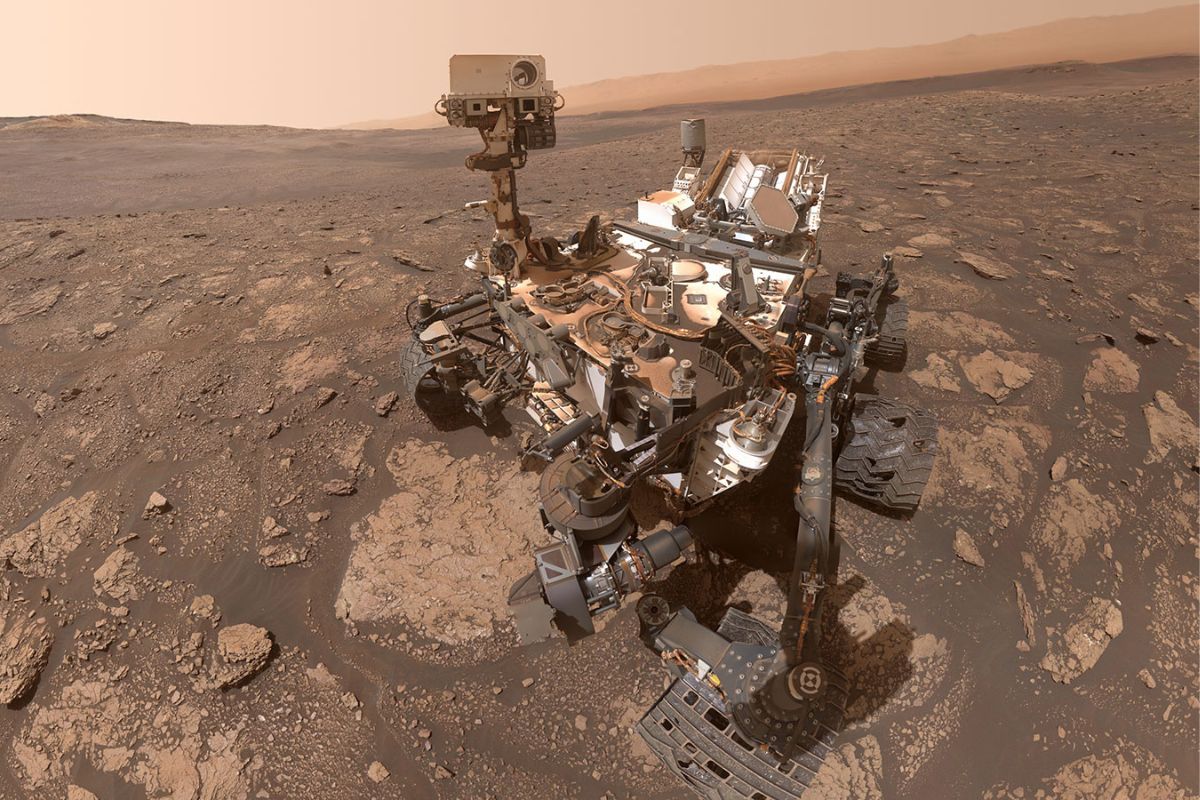In 2019, NASA's Curiosity rover discovered methane on Mars. But how she got there and why she was behaving strangely was not clear. More is now known about this.
On Earth, almost all methane is produced by living organisms, such as cows. But as far as we know, little life has ever been found on Mars, let alone that it could produce methane as well. So it was very surprising to find methane in Gale Crater on the Red Planet, where Curiosity set foot more than a decade ago. NASA researchers hypothesized that there must be some mechanism involving water and rocks deep within the Earth that could release methane.
But this is not the whole story. The Mars probe discovered that methane gas behaves in a strange way. It appears at night and disappears during the day. It also fluctuates seasonally, sometimes reaching levels 40 times higher than normal. Furthermore, methane does not accumulate in the atmosphere, as it does on Earth.
the solution
Scientists are working to find an explanation for the unusual behavior of the gas and why it only occurs in Gale Crater. They recently came up with Interesting idea. Methane may be trapped under the hardened salt that forms in Martian debris. This is a surface that consists of loose stones, dust and other gravel. As temperatures rise in the warmer seasons or at certain times of the day, the salt softens and allows the methane to escape.
The gas can also be released through cracks in the ground, created under pressure from, for example, a Mars rover. This would also explain why gas has only been discovered in Gale Crater. It's one of two places on Mars where a robot is drilling into the surface. This also happens at Jezero crater, but this rover does not have an on-board instrument to detect methane.
Old experience
The theory stems from a 2017 experiment in which scientists grew microorganisms in Martian permafrost to which salt had been added, as is done on Mars itself. It was then tested whether some bacteria that live in salt water on Earth could also exist on Mars. The outcome remained unclear, but the researchers discovered something else: The top layer formed a salt crust, as the salt ice sublimated, or changed from a solid to a gaseous state, leaving behind salt.
“We didn't think much about it at the time,” says NASA's Alexander Pavlov, but when the Mars spacecraft detected a methane explosion in 2019, which no one could explain, it came back to mind. Then he and his team began testing the conditions under which hard salt crusts could form and crack. They added varying amounts of perchlorate, a common salt on Mars, to the permafrost.
Different concentrations of salts
Today, there is no longer any permafrost in Gale Crater, but the salt crust may have formed long ago when it was colder and icier. The scientists then exposed the samples to different temperatures and air pressures to see what happened. Periodically, scientists injected neon, an analogue of methane, under the crust and measured the pressure of the gas at the top and bottom. High pressure under the sample indicates that the gas is trapped. What the researchers expected also happened: In Mars-like conditions, a salt crust formed within three to thirteen days, but only in samples containing 5 to 10 percent perchlorate.
This is a much higher salt concentration than Curiosity measured at Gale Crater. But the soil there is rich in a different type of salt mineral called sulfate. The researchers now want to test whether sulfates can also form such salt crusts.
Waiting for the future
But in addition to these theoretical exercises, field research is also needed. However, Curiosity only searches for methane twice a year, because it spends the rest of the time drilling on the surface of Mars to analyze its chemical composition. “Methane experiments are very intensive, so we have to think carefully about when we want to run them,” answers one of the researchers.
Also, the technology is not yet sufficiently developed. For example, to test how often methane levels peak, a new generation of instruments will be needed that can measure methane continuously at multiple locations on Mars. “Some of the methane work is intended for future spacecraft that are more focused on answering these specific questions,” she said.

“Thinker. Coffeeaholic. Award-winning gamer. Web trailblazer. Pop culture scholar. Beer guru. Food specialist.”







More Stories
Comet Tsuchinshan-Atlas is ready to shine this fall
Sonos isn’t bringing back its old app after all
Indiana Jones and the Great Circle is coming to PS5 in spring 2025